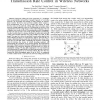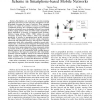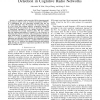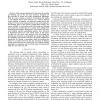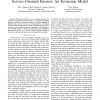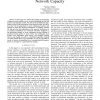INFOCOM
2010
IEEE
13 years 10 months ago
2010
IEEE
Abstract—We consider multiuser scheduling in wireless networks with channel variations and flow-level dynamics. Recently, it has been shown that the MaxWeight algorithm, which i...
INFOCOM
2010
IEEE
13 years 10 months ago
2010
IEEE
—Despite much research on the throughput of relaying networks under idealized interference models, many practical wireless networks rely on physical-layer protocols that preclude...
INFOCOM
2010
IEEE
13 years 10 months ago
2010
IEEE
—Network coding has been proposed as a technique that can potentially increase the transport capacity of a wireless network via processing and mixing of data packets at intermedi...
INFOCOM
2010
IEEE
13 years 10 months ago
2010
IEEE
—Since the inception of network coding in information theory, we have witnessed a sharp increase of research interest in its applications in communications and networking, where ...
INFOCOM
2010
IEEE
13 years 10 months ago
2010
IEEE
INFOCOM
2010
IEEE
13 years 10 months ago
2010
IEEE
Abstract—In cognitive radio networks (CRNs), detecting smallscale primary devices—such as wireless microphones (WMs)— is a challenging, but very important, problem that has n...
INFOCOM
2010
IEEE
13 years 10 months ago
2010
IEEE
—Many popular algorithms for fast packet forwarding and filtering rely on the tree data structure. Examples are the trie-based IP lookup and packet classification algorithms. W...
INFOCOM
2010
IEEE
13 years 10 months ago
2010
IEEE
—This paper presents a new economic approach for studying competition and innovation in a complex and highly interactive system of network providers, users, and suppliers of digi...
INFOCOM
2010
IEEE
13 years 10 months ago
2010
IEEE
—In this paper we consider the problem of maximizing wireless network capacity (a.k.a. one-shot scheduling) in both the protocol and physical models. We give the first distribut...
INFOCOM
2010
IEEE
13 years 10 months ago
2010
IEEE
Abstract—Multiple-input and multiple-output (MIMO) technique is considered as one of the most promising emerging wireless technologies that can significantly improve transmissio...

